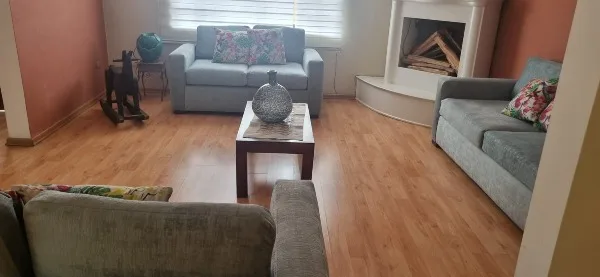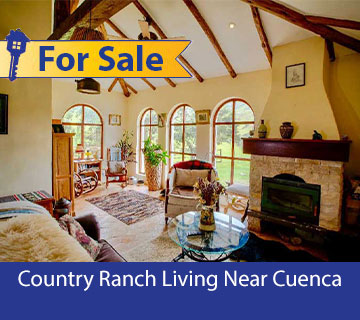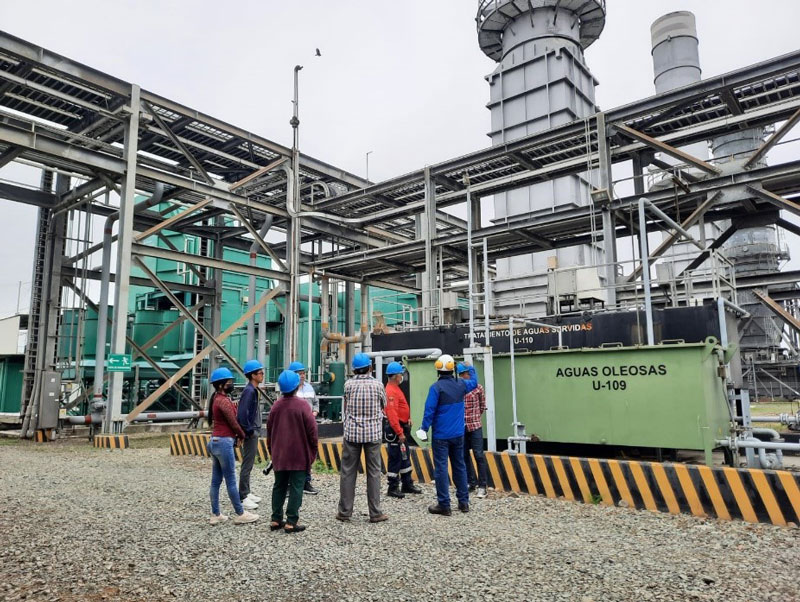Need eggs? Come to Cuenca!
Author’s Note: This is Part II of my egg series. To read Part I, click here.
In 2015 the U.S. Department of Agriculture issued new Dietary Guidelines. Reflecting current research, they dropped the 1960s-era blanket advisory to limit dietary cholesterol to 300 mg per day or less.
The 2015-2020 guidelines reflected current science that shows a negligible relationship between high blood cholesterol and dietary cholesterol. The USDA says dietary cholesterol is not a “nutrient of concern” for most people, but advise that people with existing heart disease and type 2 diabetes still limit dietary cholesterol.

Hard or soft-boiled, scrambled, baked or in an omelet, eggs are nutritious and delicious.
But as I wrote in Part I about the healthy attributes of eggs, a new study published in the medical journal JAMA linked egg consumption to heart disease. Thinking that this controversy had been put to bed, I was reassured to read a column by Professor Madelyn Fernstrom, Ph.D., of Today.com. who said, “… You can relax. Eggs remain a nutrient-rich healthful choice when eaten in moderation.”
Fernstrom notes that although the researchers concluded that for every 300 milligrams of dietary cholesterol in the diet there was a significant increase in risk for heart disease and early death from any cause, the way the meta-analysis was conducted meant “a lot of gaps in information and assumptions that can be misleading and confusing.” She emphasized that data, especially self-reported data, is highly variable.
Many other lifestyle factors can also contribute to cardiovascular risk including weight, smoking, other sources of fat and cholesterol in the diet and intake of saturated fat, and exercise — and Fernstrom warns that these factors were not adequately nor consistently factored in for the conclusion exclusively attributed to eggs.
As Forbes.com’s health writer Bruce Y. Lee says, “Your choice is not simply between eating only eggs versus eating no eggs at all.” Research shows that eggs, as part of a healthy weight plan, increase satiety and help you control your weight.
Get your eggs in Cuenca!
And Cuenca is egg central! Especially Feria Libre, the huge mercado on Avenida de las Americas near Remigio Crespo. It’s a great place to find all types of eggs, ranging in size from tiny quail eggs to monster goose eggs.

Quite the variety! Egg-cellent selection of eggs at Feria Libre in Cuenca.
Huevo de codorniz, huevo de pollo, huevo de pato, y huevo de ganso.
Quail eggs are culinary treats in Cuenca. I’ve enjoyed them in simple almuerzo soups and in fancy salads in nice restaurants. Street vendors sell them peeled as snacks, five-for-a-dollar — the taste is mild and delicious. A five-egg serving contains only 71 calories, 6 grams of protein, about the same as one chicken egg.
Duck eggs: A couple of years ago, my friend Ken insisted I write about duck eggs, which I’d not tried. His housekeeper Ida said she’d be happy to take me shopping at Feria Libre, but we had to go on Wednesday or Saturday because those are the duck egg days.

Ida knows where to get the best prices on eggs.
If you’ve never been to Feria Libre, you’re in for an experience. It is enormous! Arriving by bus, Ida led the way, wading into the crowds of vendors and shoppers, me just keeping up, trying not to lose track of her.
As Ida had eggs on her shopping list, I was lucky enough to watch her negotiate three-dozen eggs gorgeously colorful eggs for $8.00.
But duck eggs were a different story — the cheapest was $0.60 per egg, and they’re of course, larger and more expensive compared to chicken eggs, with thicker shells and longer shelf life than chicken eggs. Duck egg whites are more transparent, the yolks deeper yellow and richer in cholesterol and fat. Higher in protein, since ducks eat all sorts of food including bugs, snails, slugs, and all types of plants, they’re especially rich in omega-3 fatty acids and have a stronger flavor compared to chickens.
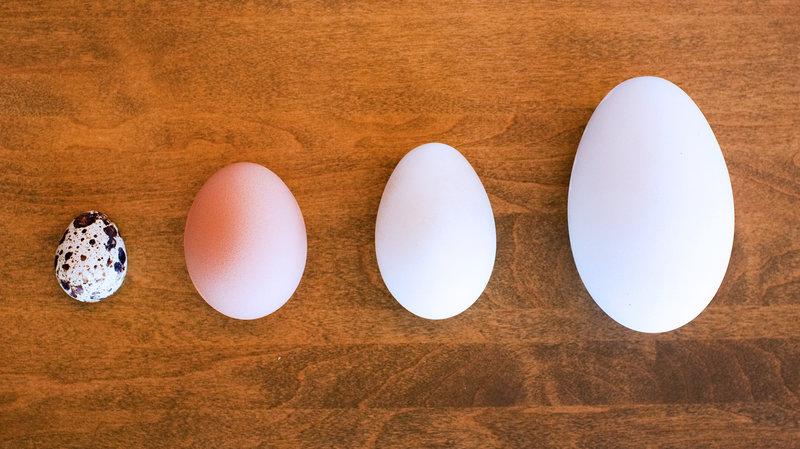
Quail, chicken, duck, goose. Credit:
Meg Vogel/NPR
Goose eggs are big! One goose egg contains about 265 calories, compared to a chicken eggs’ 80. A goose egg has much more saturated fat, and a significant amount of dietary cholesterol — the calories are three times the amount of chicken eggs but there is six times the cholesterol, about 1227 mg.
Goose eggs are rich in all of the vitamins and minerals and nutrients that are found in chicken eggs and are especially good sources of phosphorus, important for bone health. A large chicken egg has about 100 mg of phosphorus, and a goose egg contains 300 mg.
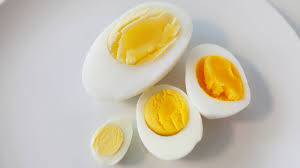
From left: The yolks of quail, chicken, duck and goose eggs. Credit:
Meg Vogel/NPR
And goose eggs are muy caro (expensive). We asked a vendor, “cuantos por un huevo de ganzo?” I thought he replied, “setenta.” Hmmm, I thought…that’s a good deal and handed him a dollar coin. He looked at me, looked at my coin, and before I had a chance to be too humiliated, Ida stepped in and clarified, “no setenta centavos…siete dólares.”
Seven dollars for one egg! I didn’t embarrass myself any further, and just said, “lo siento,” and started to walk away. As I did a young man tapped me on the shoulder. “Excuse me,” he said in English. He introduced himself as a Cuencano who’d lived in the U.S. for a number of years. He spoke with the vendor… and then explained that the vendor wanted me to know that the reason goose eggs are so expensive is that they typically lay only one clutch of about 15 eggs in the spring. Since it wasn’t the season, that explained the high price, and he invited me to come back in a couple of months — I’d find them for less money. People in Cuenca are so nice.
Egg safety
For many, buying eggs in the market means you’re stepping out of your comfort zone — they’re not all polished and shiny like the eggs you’ll buy in the carton at the supermercados. And what about refrigeration? Well…just like in most of Europe, Ecuador’s eggs are typically not refrigerated, even in the big supermarkets like Supermaxi and Coral.
An article in NPR.org quotes food writer Michael Ruhlman, author of Egg: a Culinary Exploration of the World’s Most Versatile Ingredient, who said, “The egg is a marvel in terms of protecting itself, and one of the protections is their coating, which prevents them from being porous.” Fooducate reports that European eggs (sold unrefrigerated and unwashed), sicken fewer people than in the USA.
If you’re buying straight from the farmer, eggs are bound to have bits of dirt and stain on them. But buying from the market typically means that they’re fresh, so don’t wash eggs until just before you cook them, and wash your hands thoroughly before and after handling. Hey, eggs come through the hen’s “vent” – the same place that they excrete their waste through. Don’t buy or eat eggs whose shells are cracked.
If you do buy eggs and then refrigerate them, keep them refrigerated because a cold egg left out at room temperature can sweat, facilitating the growth of bacteria that could contaminate the egg.
I advise against consuming raw eggs. Yes, I know, it’s the rare egg that is contaminated with salmonella bacteria, but cooking to at least 160 degrees F (71 C) will kill the bacteria. Pregnant women, infants, and anyone with a compromised immune system should not eat raw eggs.

Mote pillo. Credit: Laylita.com
Eggs figure prominently in many Ecuadorian traditional recipes. One of my favorites is mote pillo or Ecuadorian hominy with scrambled eggs. Laylita’s website has a wonderful recipe with sautéed onions, garlic, achiote, eggs, milk, chives, and cilantro or parsley, plus more recipes that feature eggs.
Where do you buy your eggs? Do you have a favorite source? Feel free to share in the comments below. Gran Roca Sustainable Farm in Yunguilla sells eggs from chickens that are pastured, not caged. Click here to see their movable chicken coops.

Gran Roca’s pastured chickens get to peck in their movable coops.
More Egg Facts
Eggs are quite nutritious!
- One large egg has 72 calories, 5 grams of fat (1.5 grams saturated), 70 milligrams of sodium, and 6 grams of protein.
- Eggs are considered the reference standard for high biological value (HBV) protein
- The yolk contains all the fat and cholesterol, most of the calories, and nearly half of the protein, as well as zinc, B vitamins (including riboflavin and folate), vitamin A, iron, carotenoids (lutein and zeaxanthin), choline, and other nutrients.
- Eggs contain every B vitamin, including B12, biotin, and choline.
- Eggs contain more choline than any other food: choline is important in brain health. They’re high in antioxidants lutein and zeaxanthine, linked to a reduced risk for macular degeneration and cataracts.
- They’re the best food source of vitamin D.
- Brown eggs are not more nutritious than white. Different breeds lay eggs with different shell colors. For instance, Orpington hens lay brown eggs, Leghorns lay white ones. Some breeds even lay blue or green eggs.
- Yolk color depends on what the chicken ate: wheat and barley produce a light yolk, corn a medium-yellow yolk, and marigold petals a deep yellow. Though not a sure indication, darker yolks may have more omega-3s and carotenoids.
- The term “organic” on an egg carton means that the chickens were fed an organic diet, not that the eggs are necessarily more nutritious.
Sources
BerkeleyWellness.com. What’s in an Egg? Accessed March 21, 2019.
JAMANetwork.com. Associations of dietary cholesterol or egg consumption with incident cardiovascular disease and mortality. Accessed March 21, 2019.
Forbes.com. Are eggs good or bad? How you should interpret this latest study. Accessed March 19, 2019.
MedicalNewsToday. Can eating eggs help you lose weight? Accessed March 21, 2019.
NHS.UK. The healthy way to eat eggs. Accessed March 19, 2019.
Today.com. Eggs and cholesterol: Why a new study may be misleading. Accessed March 19, 2019.
Whfoods.com. The World’s Healthiest Foods. Eggs, pasture-raised.
USDA.gov. Organic Certification and Accreditation. Accessed March 21, 2019.
Susan Burke March, a Cuenca expat, is a Registered and Licensed Dietitian, a Certified Diabetes Educator who specializes in smart solutions for weight loss and diabetes-related weight management. She is the author of Making Weight Control Second Nature: Living Thin Naturally—a fun and informative book intended to liberate serial dieters and make healthy living and weight control both possible and instinctual over the long term. Have a question for Susan? Email SusanTheDietitian@gmail.com








